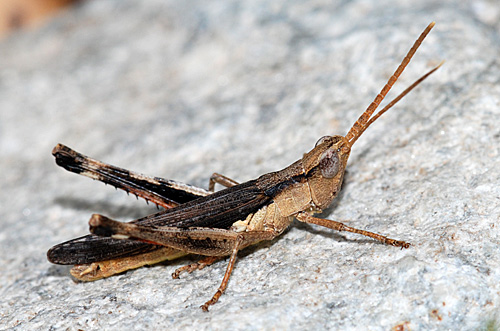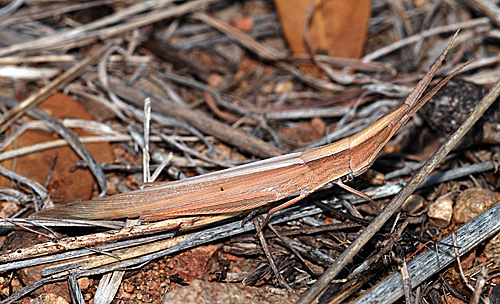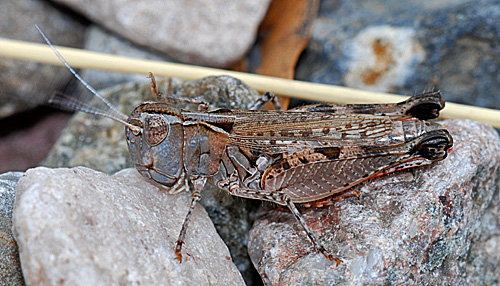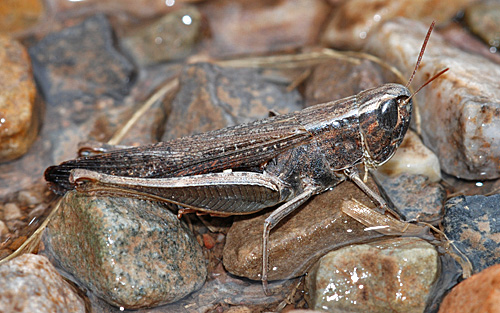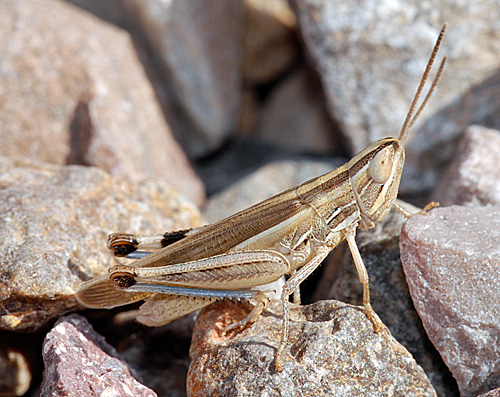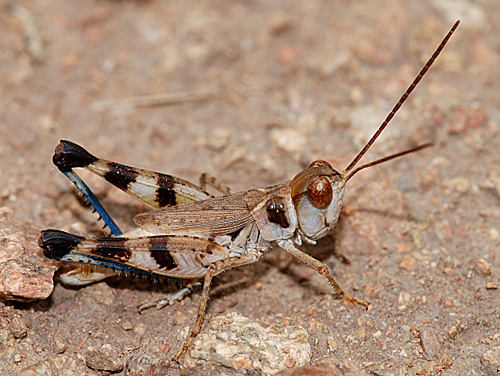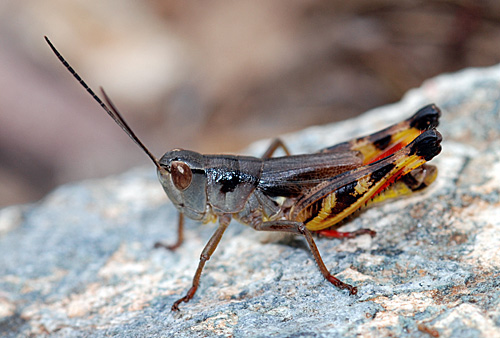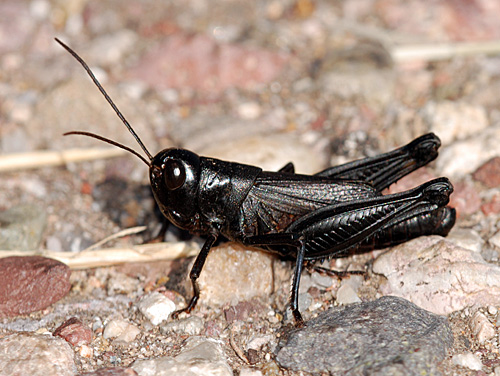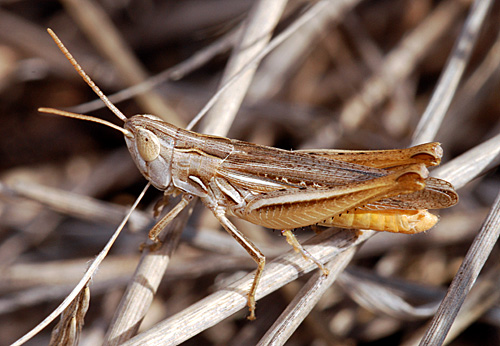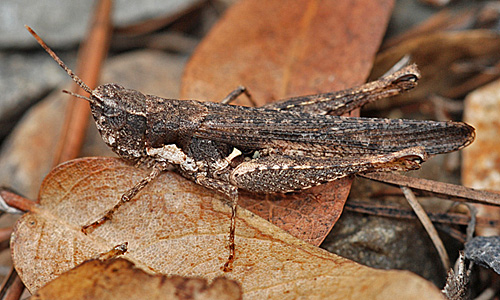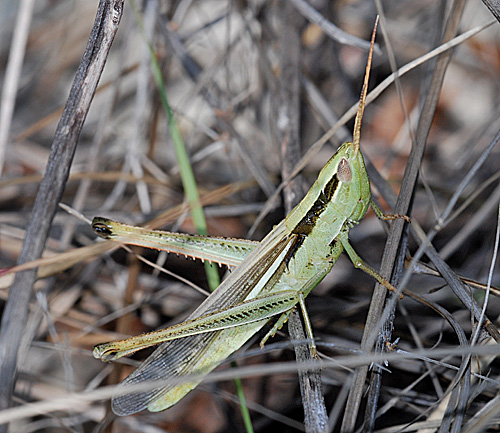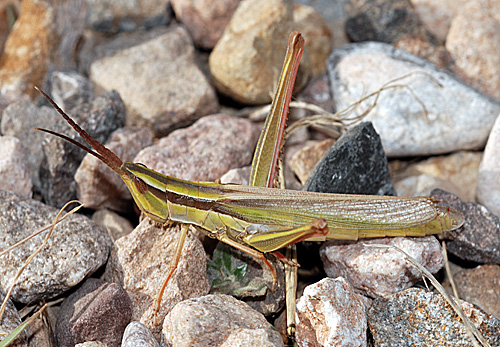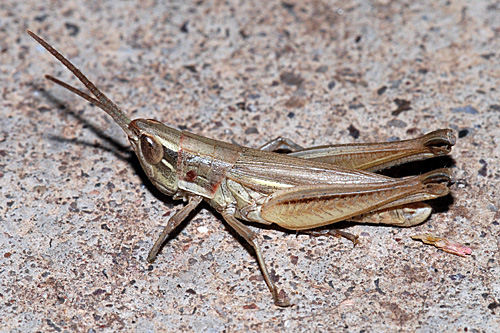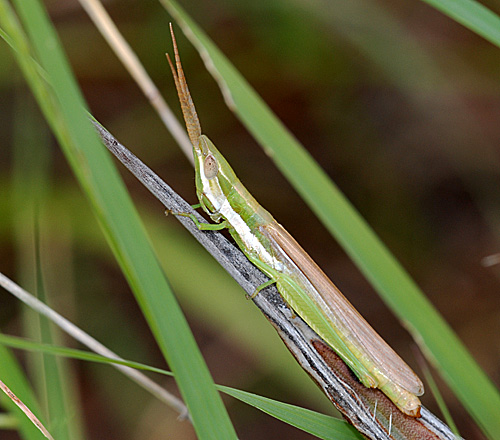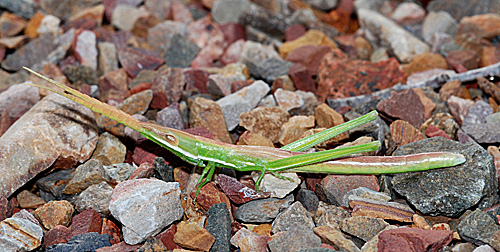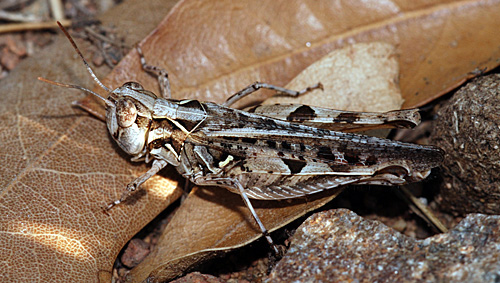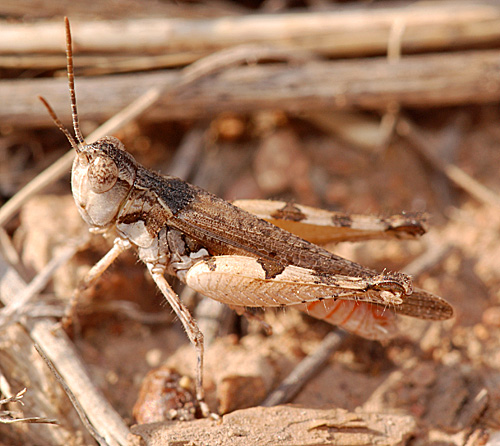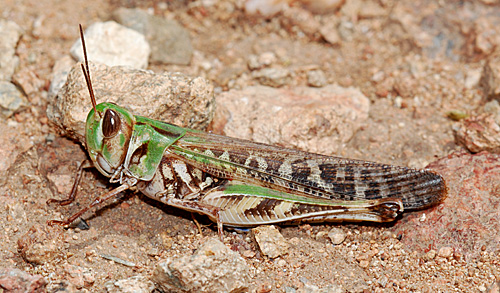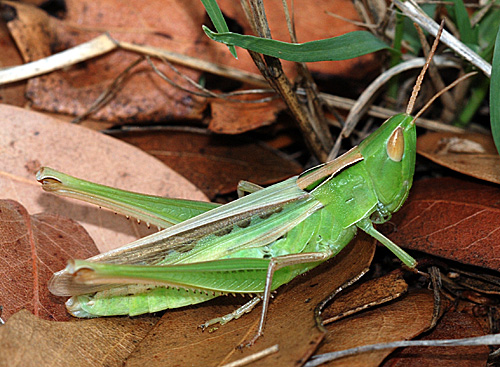[[[[[
**********************************************************************
ACRIDIDAE (SHORT-HORNED GRASSHOPPERS), CONT.
SLANT-FACED GRASSHOPPERS: SUBFAMILY GOMPHOCERINAE
A male Slender Range Grasshopper (Acantherus piperatus) (30 August 2008)
Sumichrast’s Toothpick Grasshopper (Achurum sumichrasti) is most common in or near oaks (2 July 2008)
The White-whiskered Grasshopper (Ageneotettix deorum) ranges from mesquite grassland up to mixed conifer forest. The white "whiskers" are the antennae (25 August 2008)
Brown Winter Grasshopper (Amblytropidia mysteca) (25 August 2008)
Striped Slantfaced Grasshopper (Amphitornus coloradus) may be abundant in tall grasses. This male was photographed in the driveway (22 June 2008)
A male White-crossed Grasshopper (Aulocara femoratum) on a patch of open ground (28 August 2008)
No common name (Boopedon flaviventris). This species may be present by the hundreds (30 August 2008)
Ebony Grasshopper (Boopedon nubilum) This is a male. Females are usually pale brown but may be green or black. Fort Huachuca, Sierra Vista, AZ. (29 October 2007)
Velvet-striped Grasshopper (Eritettix simplex) occurs on the property in both brown and green morphs. It is most common during spring (22 June 2008)
Ash-gray Range Grasshopper (Horesidotes cinereus) is usually in oak leaf litter and never common (18 July 2008)
Two-striped Mermeria (Mermiria bivittata) is often abundant in tall grasses, as is the next species (17 August 2008)
Painted Mermeria (Mermiria picta) (31 October 2007)
A tiny male Obscure Grasshopper (Opeia obscura) photographed at the front door (9 October 2008)
Mantled Toothpick Grasshoppers (Paropomala pallida) occur in both brown and green forms making them difficult to spot in the grasses they inhabit (25 August 2008)
Snow’s Toothpick Grasshopper (Prorocorypha snowi) is the most elongate 'hopper in the U.S. where it occurs in several counties in southern Arizona (11 August 2008)
Brown-spotted Range Grasshopper (Psoloessa delicatula) is greatly outnumbered by the following species (2 July 2008)
Texas Spotted Range Grasshopper (Psoloessa texana) (21 June 2008)
Traveler Grasshopper (Rhammatocerus viatorius). Coloration of fall and winter individuals seems to be limited to grays and browns. (27 August 2008)
Montezuma’s Grasshopper (Syrbula montezuma). Males and females (such as this) have black hindwings. They are abundant in grassy habitats where the male's buzz is disturbingly similar to that of a rattlesnake (12 July 2008)
**************************************************************
Return to the Naturewide Images Home Page
The Trade Name Naturewide Images has been registered with The State of Arizona
© Robert A. Behrstock 2018
Images may not be reproduced without the Photographer's permission.
